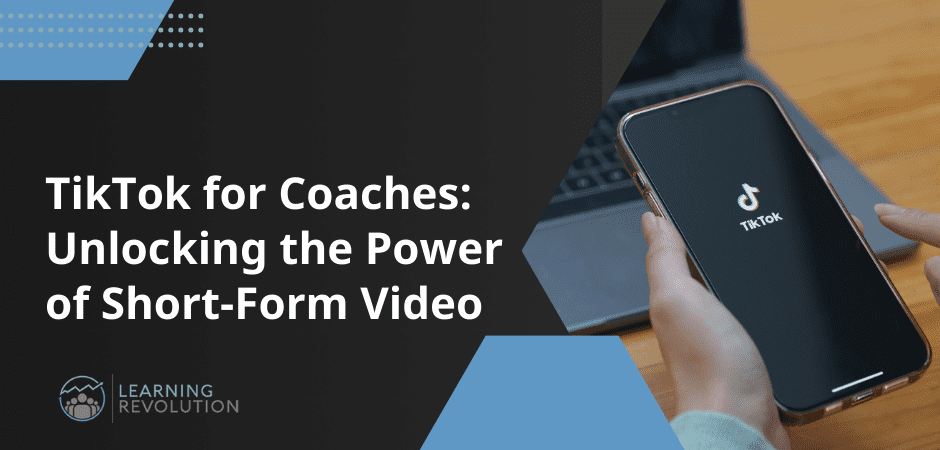Mobile learning, also known as M-learning, is a form of distance education that allows learners to use portable devices such as mobile phones to learn anytime and anywhere. With the convenience and flexibility that mobile devices provide, users can access learning content at the point of need, enabling them to learn at their own pace and on their own schedule.
Mobile learning has revolutionized the way people learn by leveraging the power of mobile technology. It has opened up new possibilities for education and training, making learning more accessible and engaging. With the availability of learning content on-the-go, learners can acquire new skills and knowledge on their personal devices, avoiding the constraints of traditional classroom-based learning.
We will explore the benefits, best tools and techniques of mobile learning and how it can transform the way we learn.
Introduction To Mobile Learning
Mobile learning, also known as mLearning, is the process of accessing educational materials through portable devices such as smartphones or tablets. It provides learners with the flexibility and convenience of studying anytime and anywhere.
What Is Mobile Learning?
Mobile learning, or mLearning, is a type of distance education that allows learners to access educational content through portable devices like mobile phones, tablets, or laptops. This type of learning enables students to learn anywhere and anytime, as long as they have their device with them. The portability that mobile devices provide is the reason why this type of learning is called “mobile.”
Advantages Of Mobile Learning
The benefits of mobile learning are many. One of the primary advantages is the flexibility it provides. Learners can access lessons, modules, activities, and courses anytime, anywhere via their mobile devices. This means that they don’t necessarily have to take training during office hours or in the office itself. They can access learning materials from their home, while commuting, or even during breaks. Mobile learning is also cost-effective as it eliminates the need for physical classroom space and printed materials. Additionally, mobile learning provides learners with personalized, on-demand training that can cater to their unique learning needs.
Overall, mobile learning offers flexibility, accessibility, cost-effectiveness, and customized training, making it a popular choice for both educational and corporate settings.
Benefits Of Mobile Learning
Mobile learning, also known as m-learning, refers to the method of accessing education or training through portable devices like mobile phones and tablets. It allows individuals to learn anytime, anywhere, making it convenient and accessible. The benefits of mobile learning include flexibility, portability, scalability, and engagement.
f training conducted through mobile devices, offering learners the flexibility to learn anytime and anywhere. Mobile learning has become an indispensable tool in the e-learning industry, providing various benefits to both learners and organizations. Below are some of the essential benefits of adopting mobile learning in your training and development plan.
Access To Learning Anytime And Anywhere
One of the primary benefits of mobile learning is the convenience it provides to learners. Mobile devices enable learners to access their training content anywhere and anytime, ensuring that they don’t miss any important lessons which might not be feasible through traditional classroom settings. With mobile learning, learners can access their study materials on the go from any location, making it ideal for professionals who travel frequently or for organizations with remote teams.
Increased Engagement And Retention
Mobile learning can make training and development more engaging and interactive for learners. By implementing gamification and interactive features, organizations can increase the engagement levels and retention of learners. Gamification adds an element of competition among learners, motivating them to participate in training and eagerly completing courses. The interactive features also help learners to understand the material better by keeping them actively engaged and helping them retain information better.
Flexible Learning Options
Another significant benefit of mobile learning is the flexibility it provides learners. With mobile learning, learners can access their courses at their preferred pace, style, and time, ensuring that they learn within their comfort zone and personal preference. This flexibility is especially helpful to adult learners who are juggling different responsibilities. It also provides organizations with the advantage of reducing the time it takes for employees to complete their training and development programs.
In conclusion, these benefits show how mobile learning has revolutionized the way organizations approach their training and development needs. It offers learners a convenient and engaging way to learn, while organizations can provide training to their employees without any geographical limitations. By adopting mobile learning, an organization can stay ahead in today’s rapidly evolving business landscape.
Mobile Learning Vs Elearning
Mobile learning, also known as mLearning, refers to the delivery of educational content through portable devices like mobile phones and tablets. It enables learning on-the-go, anytime and anywhere, making it a popular choice among modern learners.
Mobile Learning vs eLearning
Mobile learning, also known as mLearning, refers to learning content accessed through mobile devices. It is a form of distance education that allows learners to access learning sources anytime and anywhere, provided they have an internet connection. On the other hand, eLearning, also known as electronic learning, is designed for people who have a good internet connection at home or office and access courses through desktops or laptops.
Differences in Devices Used
Mobile Learning platforms use portable devices such as smartphones, tablets, and smartwatches that weight around 5-7 ounces and can fit in users’ pockets or have up to 12 inch screens. In contrast, eLearning platforms are accessed through desktop or laptop computers that typically have larger screens and hard drives, ranging from 13 to 27 inches.
Learning Platforms
Mobile learning apps are optimized for mobile or smaller screens and often have fewer features compared to eLearning platforms. Due to mobile applications’ smaller size, they offer fewer options, feature shorter courses, and provide bite-sized modules that can be consumed quickly. On the other hand, eLearning offers access to a more substantial amount of content with elaborate course structures, interactivity, multimedia, and testing to increase the student’s engagement.
In summary, while there are some similarities between mobile learning and eLearning, the platforms’ main differences lie in the devices used and the learning techniques offered. Both platforms can be used for training and education, but mobile learning is better suited to those who are always on the move and need to learn at their own pace, while eLearning offers more comprehensive and elaborate content for those interested in formal learning courses.

Credit: www.learningrevolution.net
Examples Of Mobile Learning
Mobile learning, also known as mLearning, is a form of distance education that enables learners to access learning content using portable devices such as smartphones. With mobile devices’ portability, learners can access learning content anytime and anywhere, empowering learning at the point of need.
Some examples include language learning apps, mobile quizzes, and mobile storytelling.
Examples of Mobile Learning
Mobile learning, also known as mLearning, is a modern method of delivering education and training via mobile devices, such as smartphones and tablets. This method is becoming increasingly popular, as it allows learners to access content anytime and anywhere. A few examples of how mobile learning is used in various fields are presented below.
Uses in Education
Mobile devices have become an essential part of our daily lives. As a result, educators have turned to mobile learning to make learning more accessible and engaging. Here’s how they’re using it:
1. Digital textbooks: Instead of carrying around heavy textbooks, students can download digital versions onto their mobile devices. Digital textbooks incorporate multimedia elements such as videos and interactive animations, making the learning experience more engaging and exciting.
2. Gamification: Gamification is about applying game design principles to non-game applications to increase user engagement. Educators have incorporated gamification into mobile learning apps to make learning more fun and interactive.
3. Language learning: Mobile devices can be used to deliver language learning content, including grammar lessons, vocabulary exercises, and pronunciation guides.
Uses in Corporate Training
Mobile learning is also used in the corporate world to deliver training content to employees anytime and anywhere. Here are a few examples of how it’s used:
1. Onboarding: Mobile learning can be used to provide new hires with information about the company, its policies, and procedures. This approach helps new employees get up to speed with the company’s goals and culture quickly.
2. Compliance training: Compliance training is a crucial aspect of corporate training. Mobile learning makes it easy for employees to access compliance materials at any time, ensuring that the company complies with regulations.
3. Sales training: Sales professionals benefit from mobile learning because they can access training modules on the go. Sales training apps may include product specifications and pricing, as well as tips and tricks for closing deals.
In conclusion, mobile learning offers a flexible and convenient way of delivering education and training. It enables learners to access content anytime and anywhere and is suitable for both formal and informal learning.
Designing Effective Mobile Learning
Mobile learning, also known as mLearning, refers to accessing educational content through portable devices such as mobile phones and tablets. It offers the flexibility to learn anywhere and anytime, making it easier to access learning materials during spare time or while on the go.
Designing Effective Mobile Learning
Mobile learning or mLearning has revolutionized the way people learn, providing an opportunity for learners to get access to learning content anywhere and anytime. However, designing effective mobile learning courses requires careful consideration of several factors.
H3: Considerations for Mobile Learning Design
Designers of mobile learning content need to keep in mind certain considerations to provide effective learning experiences. These considerations include:
1. Device Compatibility: Mobile learning content needs to be compatible with a wide range of devices, considering their operating systems, screen sizes, and internet connectivity.
2. User Interface: The user interface of mobile learning content should be intuitive and simple to use, with easy navigation and clear calls to action.
3. Content Adaptability: The learning content needs to be adaptable to different device formats, with options for text, audio, and visuals.
4. Chunking of Content: Breakdown the learning content into smaller chunks or microlearning modules, and avoid lengthy lectures or webinars to keep the learners engaged.
H3: Effective Mobile Learning Strategies
Mobile learning should have the following elements to make it effective for learners:
1. Accessibility: Accessibility is a significant factor in mobile learning, with content available to access anywhere and anytime.
2. Bite-sized Learning: Break down the learning into smaller chunks, allowing learners to learn at their own pace and convenience.
3. Interactive Learning: Add interactive elements such as quizzes, puzzles, and games to make it an exciting learning experience.
4. Multi-device Delivery: Ensure that mobile learning content is accessible through multiple devices, such as smartphones, tablets, and laptops.
5. Personalized Learning: Create personalized learning experiences that cater to the specific learning needs of the learners.
In conclusion, designing effective mobile learning involves considering various factors, including device compatibility, user interface, content adaptability, and chunking of content. Mobile learning strategies that ensure accessibility, bite-sized learning, interactive learning, multi-device delivery, and personalized learning can effectively engage learners and promote knowledge retention.
Top Mobile Learning Tools
Mobile learning, also known as mLearning, is the use of portable devices like smartphones for distance education. It allows learners to access learning content anytime and anywhere, enabling learning at the point of need. Top mobile learning tools include Adobe Captivate, Articulate Storyline, and Moodle mobile.
of portable computing devices, such as smartphones or tablets, is known as mobile learning or mLearning for short. There are a variety of tools available that help to facilitate mobile learning, from apps to websites to platforms. In this section, we’ll cover some of the top mobile learning tools available, with a focus on edTech tools for mobile learning and discussing the features of effective mobile learning apps.
Edtech Tools For Mobile Learning
One of the key players in the world of mobile learning is edTech, or education technology. EdTech encompasses a wide range of tools, both hardware and software, that are designed to enhance and support learning experiences. Here are some of the top edTech tools that can help with mobile learning:
- Google Classroom: an all-in-one platform for managing lessons, assignments, and communication
- Edmodo: a social learning platform that allows students to connect and collaborate
- Kahoot!: a game-based learning platform that engages students through quizzes and interactive activities
- Quizlet: a flashcard and study tool that supports a variety of subjects and learning styles
- Flipgrid: a video discussion platform that allows students to share and respond to each other’s ideas
Features Of Effective Mobile Learning Apps
While there are many different types of mobile learning apps available, not all of them are created equal. Effective mobile learning apps share certain key features, including:
- Usability: the app should be easy to use, with a simple interface and intuitive navigation
- Interactivity: the app should engage learners through interactive activities, quizzes, and multimedia content
- Personalization: the app should allow learners to customize their learning experience, with options such as choosing their own learning path or setting their own pace
- Flexibility: the app should be adaptable to different learning styles and preferences, including visual, auditory, and hands-on learning modes
- Accessibility: the app should be designed for use on a variety of devices, and should be accessible to learners with different abilities and needs
By choosing edTech tools for mobile learning and using effective mobile learning apps that include these features, educators and learners alike can take advantage of the flexibility and accessibility that mobile learning offers. Whether you’re in the classroom, at home, or on the go, mobile learning tools can help you to learn anytime and anywhere.
Frequently Asked Questions For What Is Mobile Learning
What Do You Mean By Mobile Learning?
Mobile learning, also known as mLearning, is the process of accessing learning content through portable devices like smartphones or tablets. It allows learners to access educational material anytime, anywhere, making it convenient and flexible.
What Are The Benefits Of Mobile Learning?
Mobile learning, also known as m-learning, allows learners to access lessons, modules, activities, and courses on their mobile devices anytime and anywhere. This flexibility enables users to learn at their own pace, even when they’re on-the-go or outside of traditional work hours.
Mobile learning is convenient and portable, making it an excellent option for people who prefer to learn on their own terms.
What Is The Difference Between Mobile Learning And Online Learning?
Mobile learning, or m-learning, utilizes portable devices such as mobile phones, allowing learners to access materials anywhere and anytime. On the other hand, online learning or e-learning requires a stable internet connection to access courses and can be accessed through various platforms.
What Are The Stages Of Mobile Learning?
Mobile learning, also referred to as mLearning, involves accessing educational content on portable devices such as smartphones and tablets. There are three stages to mobile learning: content access, content creation, and content sharing. The ability to learn and interact with educational materials while on-the-go makes mobile learning an ideal choice for modern learners.
What Is Mobile Learning?
Mobile learning, also known as mLearning, is a form of education or training that uses portable devices such as mobile phones or tablets to access learning content anywhere and anytime.
Conclusion
In today’s fast-paced world, mobile learning has become an accessible and convenient way of accessing education content. It offers learners the flexibility and freedom of learning anywhere and anytime to suit their needs. With the ability to access courses, practice activities, and lessons through mobile devices, learners can self-pace their learning and make progress wherever they are. The importance of mobile learning has increased dramatically, especially in the current scenario, as it allows learners to keep up with their education even when working remotely. With the continued growth of technology, mobile learning is set to revolutionize the way we learn and retain knowledge.
So, embrace it and take your learning journey to the next level.












































Leave a Reply